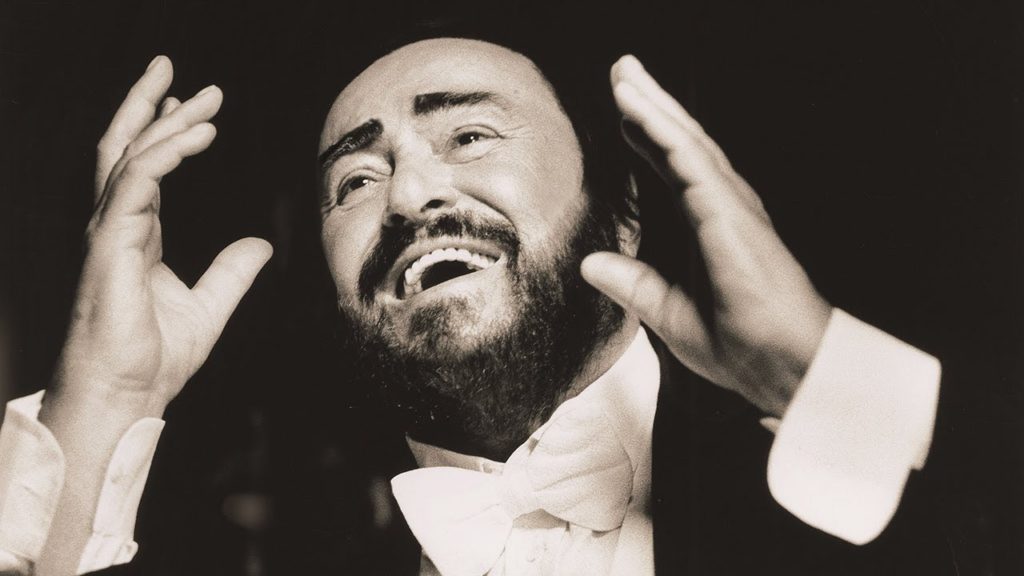Leave it to Ron Howard to craft a portrait of Luciano Pavarotti that is as exquisitely told and emotionally beauteous as Pavarotti’s own voice. PAVAROTTI is, in a word, BELLISIMO!!
The detail and depth with which Howard tells the story of the man behind the voice are not only told with an objective eye but a caring one. By film’s end, one feels as if they knew “Luciano”, that they sat at the table and ate pasta with him, that they shared a laugh.

Thanks to Howard’s keen structural eye and the storytelling sensibility of himself and writer Mark Monroe, a throughline is created within PAVAROTTI that mirrors a three-act operatic structure. For the most part chronological, the emotionality and the connective tissue for the audience come through carefully chosen arias with very specific verbiage, the placement of which in the film speaks to what is emotionally happening in Pavarotti’s real life versus a chronology of performances and recordings. One of Pavarotti’s most famous works, Nessun Dorma, is a recurring thread that signifies thematic shifts in the story. Adding even more substance to the experience of PAVAROTTI are the subtitles. Appearing primarily during the operatic performances, the English translations provide the meaning, depth, and context of the words being sung. And it is this kind of detail that speaks to the arduous and exacting nature of editing this documentary that Paul Crowder brings to the table.

Filled with archival footage, home movies, private and public photographs, there is much that has never been seen before and only serves to add to the humanity of the man himself versus his larger than life persona. Peppered with interviews from individuals across all walks of Pavarotti’s life, including many of Pavarotti himself, they are not only insightful, but interesting, and in the case of his daughters, poignant and tear-evoking. Hearing from colleagues, promoters, managers, and more, all add layers to the tapestry. And again, thanks to Paul Crowder’s editing, all are beautifully interwoven, intersecting and overlapping each thread of Pavarotti’s life as if a luxurious crewel embroidery piece. Going beyond the striking amicability among the ex-wives, wife, mistresses, and children, one of the most powerful interviews comes from U2’s Bono. Providing great reflection and observation, he proves himself to be an articulate, knowledgeable, and honest, elder statesman of music with a unique perspective that adds much to the story, particularly when he speaks to Pavarotti putting his “life” into his performances late in his career. It’s easy to sense that not only was Bono speaking about Pavarotti but about himself as time marches on.

The portrait painted shows Pavarotti as a kind, decent, humble, and happy man; a good father and husband and son; a philanthropist. We are comfortable and content in discovering this, that is until the second half of the film when Howard introduces the “demons” of fame – absence from home, the illicit romances. Key, however, is that nothing is presented in a tawdry or sleazy fashion and despite his flaws, Pavarotti remains that decent loving man we first meet. While his voice carried him and us to the heavens, these flaws show him as a mere mortal. Fascinating character portrait.

The music and archival footage truly make the film soar; particularly The Three Tenors performances which capture not only the majesty of Pavarotti’s voice and presence, but his lighthearted humor as we see the engagement among Jose Carreras, Placido Domingo, Pavarotti, and even conductor Zubin Mehta. A pure delight. Having seen The Three Tenors perform live, the experience of seeing and hearing them again in PAVAROTTI is just as moving and exhilarating.

Cinematographer Michael Dwyer provides beautifully lensed transition shots, often of nature, which add their own metaphoric celebratory lens to PAVAROTTI while reminding us of the beauty of the world from which he came that was informing his love of life. Dwyer’s images serve as a beautiful contrast to the rawness of some of the source footage.

Sound design is flawless. From the singing of birds, the rustle of the trees to the power of his voice or the conviction, respect, and love in the voices of his friends, we feel Pavarotti and his world come alive. Using the three-dimensional sound system of Dolby Atmos, re-recording mixer Chris Jenkins captures not only the intimacy of a very personal story but the visceral nature and texture of the decades and the world. Thanks to the blend of both audio and visual mediums with everything from mono tracks on Super 8 or Handycam visual footage to 96 channels of live audio recordings and archival SMPTE coded television video or film stock, Jenkins masterfully works with the contrast of the audio recordings from the grainy, small-scale source material to multi-track recordings, using all that the Atmos technology has to offer to in celebration of the joy, love, and emotion of Pavarotti.

But at the end of the day, the heart of the film is Pavarotti himself, in his own words, telling his own story through various interviews. We hear his joy, his passion, his heart. . . and his song.
Directed by Ron Howard
Written by Mark Monroe
A CBS Films Polygram Entertainment Brian Grazer presentation, PAVAROTTI is an Imagine Entertainment and White Horse Pictures production.
by debbie elias, 05/31/2019












